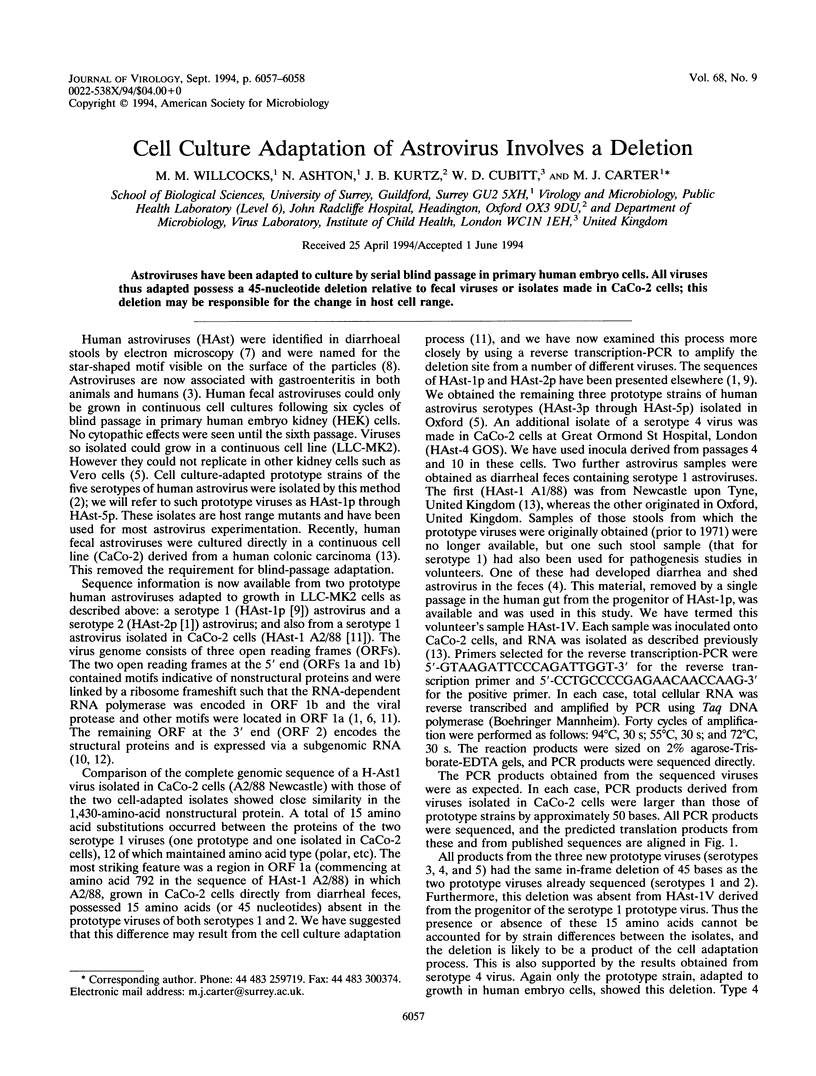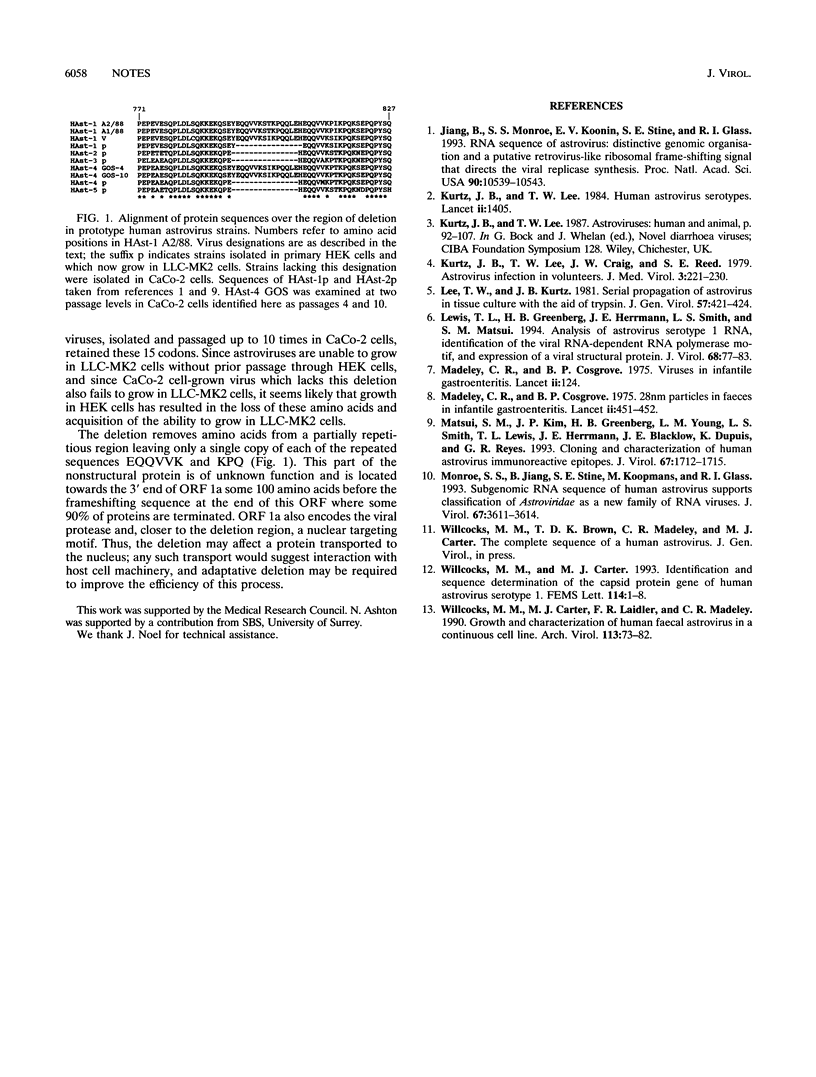Abstract
Astroviruses have been adapted to culture by serial blind passage in primary human embryo cells. All viruses thus adapted possess a 45-nucleotide deletion relative to fecal viruses or isolates made in CaCo-2 cells; this deletion may be responsible for the change in host cell range.
Full text
PDF

Selected References
These references are in PubMed. This may not be the complete list of references from this article.
- Jiang B., Monroe S. S., Koonin E. V., Stine S. E., Glass R. I. RNA sequence of astrovirus: distinctive genomic organization and a putative retrovirus-like ribosomal frameshifting signal that directs the viral replicase synthesis. Proc Natl Acad Sci U S A. 1993 Nov 15;90(22):10539–10543. doi: 10.1073/pnas.90.22.10539. [DOI] [PMC free article] [PubMed] [Google Scholar]
- Kurtz J. B., Lee T. W. Astroviruses: human and animal. Ciba Found Symp. 1987;128:92–107. doi: 10.1002/9780470513460.ch6. [DOI] [PubMed] [Google Scholar]
- Kurtz J. B., Lee T. W., Craig J. W., Reed S. E. Astrovirus infection in volunteers. J Med Virol. 1979;3(3):221–230. doi: 10.1002/jmv.1890030308. [DOI] [PubMed] [Google Scholar]
- Kurtz J. B., Lee T. W. Human astrovirus serotypes. Lancet. 1984 Dec 15;2(8416):1405–1405. doi: 10.1016/s0140-6736(84)92101-9. [DOI] [PubMed] [Google Scholar]
- Lee T. W., Kurtz J. B. Serial propagation of astrovirus in tissue culture with the aid of trypsin. J Gen Virol. 1981 Dec;57(Pt 2):421–424. doi: 10.1099/0022-1317-57-2-421. [DOI] [PubMed] [Google Scholar]
- Lewis T. L., Greenberg H. B., Herrmann J. E., Smith L. S., Matsui S. M. Analysis of astrovirus serotype 1 RNA, identification of the viral RNA-dependent RNA polymerase motif, and expression of a viral structural protein. J Virol. 1994 Jan;68(1):77–83. doi: 10.1128/jvi.68.1.77-83.1994. [DOI] [PMC free article] [PubMed] [Google Scholar]
- Madeley C. R., Cosgrove B. P. Letter: 28 nm particles in faeces in infantile gastroenteritis. Lancet. 1975 Sep 6;2(7932):451–452. doi: 10.1016/s0140-6736(75)90858-2. [DOI] [PubMed] [Google Scholar]
- Madeley C. R., Cosgrove B. P. Letter: Viruses in infantile gastroenteritis. Lancet. 1975 Jul 19;2(7925):124–124. doi: 10.1016/s0140-6736(75)90020-3. [DOI] [PubMed] [Google Scholar]
- Matsui S. M., Kim J. P., Greenberg H. B., Young L. M., Smith L. S., Lewis T. L., Herrmann J. E., Blacklow N. R., Dupuis K., Reyes G. R. Cloning and characterization of human astrovirus immunoreactive epitopes. J Virol. 1993 Mar;67(3):1712–1715. doi: 10.1128/jvi.67.3.1712-1715.1993. [DOI] [PMC free article] [PubMed] [Google Scholar]
- Monroe S. S., Jiang B., Stine S. E., Koopmans M., Glass R. I. Subgenomic RNA sequence of human astrovirus supports classification of Astroviridae as a new family of RNA viruses. J Virol. 1993 Jun;67(6):3611–3614. doi: 10.1128/jvi.67.6.3611-3614.1993. [DOI] [PMC free article] [PubMed] [Google Scholar]
- Willcocks M. M., Carter M. J. Identification and sequence determination of the capsid protein gene of human astrovirus serotype 1. FEMS Microbiol Lett. 1993 Nov 15;114(1):1–7. doi: 10.1111/j.1574-6968.1993.tb06542.x. [DOI] [PMC free article] [PubMed] [Google Scholar]
- Willcocks M. M., Carter M. J., Laidler F. R., Madeley C. R. Growth and characterisation of human faecal astrovirus in a continuous cell line. Arch Virol. 1990;113(1-2):73–81. doi: 10.1007/BF01318354. [DOI] [PubMed] [Google Scholar]


